ANALYSIS – CasaPound Italia has become one of the more successful organizations of the European far right by reframing fascist ideology, operating social welfare programmes and keeping other extremist groups at arm’s length. Is this a new form of fascism?
by Kristian A. Bjørkelo
All across Europe the rise of the radical and extreme right is making waves. Golden Dawn of Greece and Jobbik in Hungary have arrived in rather traditional fascist form. Other groups embrace Evolian traditionalism and identity politics, and some have their origins in neo-Nazi milieus like the Allgermanische Hednische Front, or Heathen Front, associated with convicts like Varg “Grishnac” Vikernes and Hendrik Möbus. Newer offshoots with a distinctly anti-Muslim or “counterjihadist” profile are also part of the landscape of right-wing extremism in contemporary Europe.
Some observers insist the differences between such groups are marginal and point to links between them. However, Italy’s CasaPound defies easy comparison. In spite of numerous ties to other extremist groups, CasaPound members object to being lumped with the others. Their leader, Gianluca Iannone, told me they would prefer that I did not even mention them in the same context. The group claims to be paving a new road for fascism that leads away from the destra terminale, or far-right dead end.
CasaPound takes its name from the American expatriate poet Ezra Pound, who spent World War II in Italy championing fascism. He famously exclaimed: “Make it new!” Iannone and his followers in CasaPound are trying to do precisely that.
Organizational origins
While the history and politics of CasaPound have been widely reported, what sets the group apart from other neo-fascist movements is less well documented. To fill in some of the blanks, I spent some time in 2013 with members of CasaPound and their headquarters in Rome.
The group started out in a small Roman pub called Cutty Sark, a cramped place with loud music. Today it is covered with stickers and slogans promoting fascist and neo-Nazi organizations as well as the anti-communist cause (anti-antifa). It also carries the scars of a bombing by anti-fascist activists. During the 1990s Cutty Sark was a favourite haunt of punk-minded fascists-to-be. ZetaZeroAlfa, a fascist punk band founded in 1997 and spearheaded by Gianluca Iannone, is to this day a focal point for the organization. The band is released on the fascist record label Rupe Tarpea. Its song “Cinghiamattanza” (The massacre belt), has become a ritualistic phenomenon amongst the youths of CasaPound; they literally whip each other into a frenzy using belts and belt buckles during concerts, and proudly share their “battle scars” on social media the next day.
In July 2002, youths from Cutty Sark and ZetaZeroAlfa participated in a squat in Via Tiberina. For its brief duration, the squat was called CasaMontag, the House of Montag, after the protagonist of Ray Bradbury’s book Fahrenheit 451. The dystopian novel is an important theme for CasaPound Italia and its countercultural image.
The next year, after a brief stint in Capo D’Africa and the squat referred to as Foro 753, Iannone occupied Via Napoleone III number 8, near the Vittorio Emanuelle II Metro station and within walking distance from Cutty Sark. This occupation was named CasaPound and has Cbecome the group’s permanent headquarters. Several other squats followed in Rome. Iannone and CasaPound joined the fascist Fiamma Tricolore for a while, but left in 2008 to found CasaPound Italia (CPI), which became a national organization. Today, CasaPound Italia consists of several thousand Italian activists – or “militants” as they refer to themselves – and a smaller number outside the country.
While squatting is often associated with the autonomous left, CasaPound insists that fascists were the ones who invented the tactic, pointing to Gabriele D’Annunzio’s occupation of the city of Fiume (today: Rijeka) in 1919.
Today CasaPound’s activities include several squats, 15 bookstores, 20 pubs (still including Cutty Sark), restaurants, publications such as the monthly L’occidentale and the quarterly Fare Quadrato1 and online radio and TV stations. In addition, the organization runs different social programmes, such as housing programmes, pro-bono legal counselling and youth clubs that feature sports and other social activities. CasaPound also manages its own aid programme.
The success of CasaPound can be attributed to two main aspects of the organization. First, it considers itself a social movement and has focused on popular activities outside of the traditional political sphere. Second, the group has actively avoided violent or thuggish confrontations.
Same old, same old?
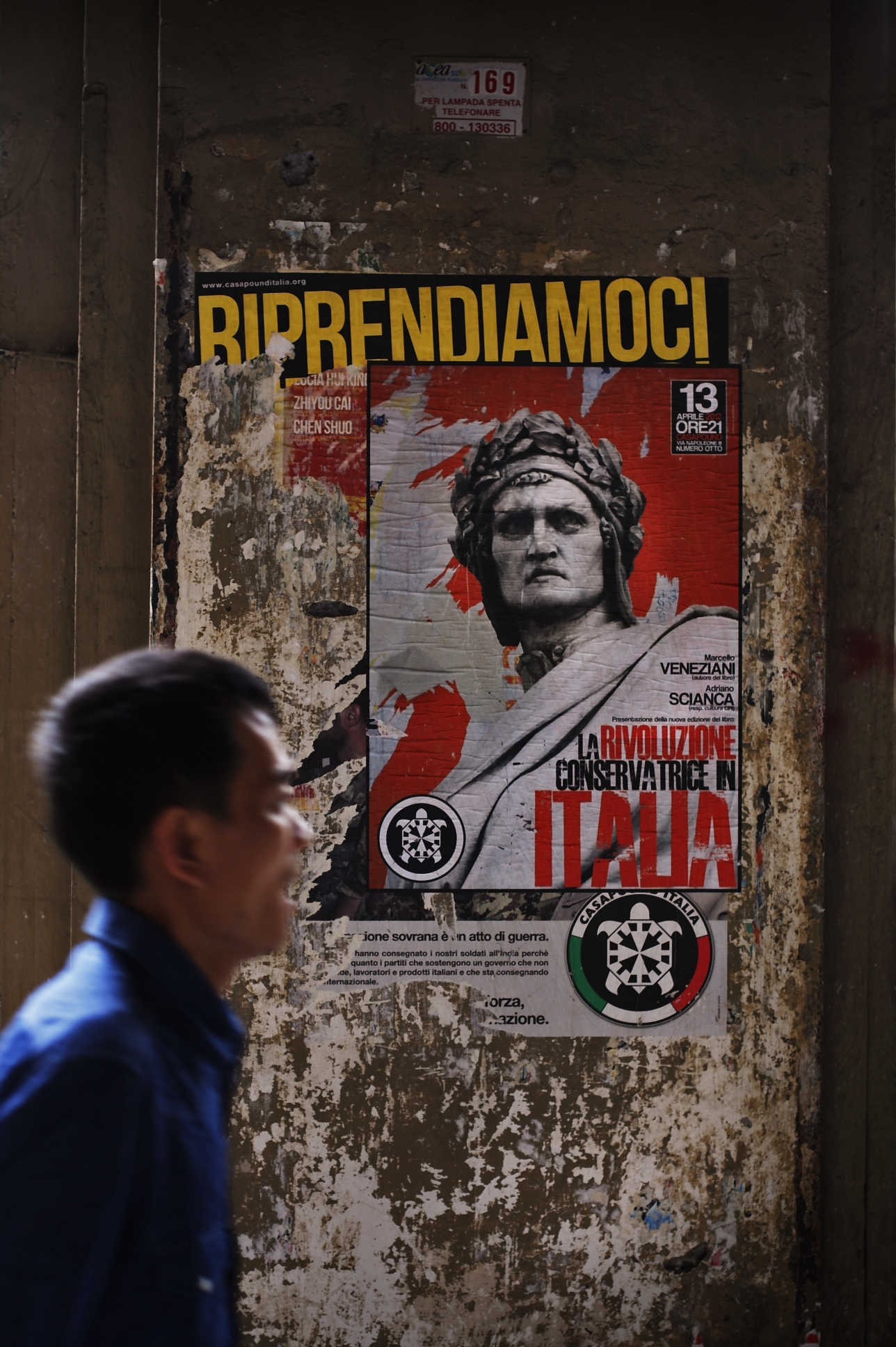
Casa Pound posters (Photo: Emanuele, Flickr. Creative Commons BY-SA 2.0)
Most news articles and scholarly work on CasaPound Italia recognize the organization as something new, but the focus generally remains on its similarities to other extreme right-wing organizations. This is, after all, a band of neo-fascists. And to be sure, the members are open about their fascist and anti-democratic views.
CasaPound members also prepare for physical confrontation, though they claim to do so only in defense of themselves and their ideals from anarchists, communists and other anti-fascist groups. On its official website, CasaPound claims to be about politics, not hooliganism. However, violence is an important part of the way CasaPound and its members construct their identities, which centre on concepts such as honour and bravery2. The “Cinghiamattanza” ritual is portrayed as an affirmation of manhood and of the willingness to inflict and endure pain. The use of social media helps participants build their identities, not only as men but as supposed fascist warriors.
Researchers Pietro Castelli Gattinara and Caterina Froio suggest that this kind of violence is part of a process of building a group identity, in which the individual “militant’s body is mythologized in a martial understanding of the self.”3 Gattinara and Froio also identify two more dimensions to CasaPound’s relation to violence: 1) a discursive dimension, with the rejection of aggressive violence serving as a strategy to adapt (rhetorically, at least) to external society, and 2) a need to stay connected to fascism’s violent past and traditional discourse of violence. As a fascist movement, CasaPound embraces fascism’s violent aesthetics, including a romantic and mythologized view of violence.
While the ritual of Cinghiamattanza involves only members of the social movement, there have also been clashes with outsiders in which CasaPound members have proved willing to stand their ground and strike back at those they consider anti-fascist aggressors. There have been several incidents of violent clashes with both anti-fascists and the police, and CasaPound has performed aggressive occupations and actions against the reality TV show Big Brother and against the EU headquarters in Rome. The most frequently cited incident of violence took place at the student protests at Piazza Navona in 2008, when left-wing activists attempted to prevent CasaPound’s youth wing, Blocco Studentesco, from participating4.
A statistical study has shown that about 15 percent of all actions performed by CasaPound were confrontational in nature, and that an additional 35 percent involved some form of violence (including light violence, such as vandalism). The group’s own rhetoric focuses little on the violence its members initiated, and more on victimization by violent enemies5. However, CasaPound “militants” are well-prepared to defend themselves, and most are adept in different fighting styles.
Another incident often linked to CasaPound is the murder of two Senegalese vendors who were gunned down in the Piazza Dalmazia market in Florence in December 2011. The gunman, 50-year-old Gianluca Casseri, wounded a third before fleeing the scene. Two days later he reappeared and shot two additional African vendors, Confronted by the police, Casseri committed suicide and was quickly associated with CasaPound. The group tried to distance itself from Casseri, referring to him as a sympathizer but not a member. And while members refrained from condoning his actions, they denied that he should be characterized as crazy.
What would be the motivation for such shootings, if not racism? The traders at Piazza Dalmazia are mostly of African in origin, and it was clear they were his target.
Most extreme right-wing groups are recognizable by their racism, and by a special antipathy towards Jews, Muslims or both. As an organization, CasaPound publicly rejects racism and denies allegations that the Casseri shootings exposed a culture of violent racism within the group. Members note that Italian fascism, unlike German National Socialism, wasn’t officially racist. Furthermore, they make the claim that while they are anti-immigration, they have nothing but sympathy for poor immigrants who are themselves victims of the immigration system and capitalism. CasaPound believes immigration keeps wages low and undermines European welfare states, so that the best solution is for immigrants to return home and develop the economic and welfare systems of their home countries. Who is to blame? In the CasaPound world view, it’s a so-called oligarchy of globalists and wealthy bankers – the same class of people that Ezra Pound called usurers.
“We are not anti-Semitic,” I was told repeatedly during my stay in Rome. The enemy was the oligarchs and the bankers, not the Jews.
Yet, while the organization as a whole refrains from overt anti-Semitic rhetoric, the terms “globalists” and “international bankers” are often used in coded anti-Semitism, and Pound’s use of the word “usurer” was often associated with Jews. Such language is indicative of the rhetorical and political tradition CasaPound grew out of, regardless of its official stance. Indeed, racist and anti-Semitic rhetoric is used by individual members of the organization in social media.
During my stay, there was an episode involving young members of CasaPound who had allegedly threatened a 15-year-old Jewish girl with sexual assault. Group members told me the story was essentially an effort by their adversaries to discredit them, and linked it to accusations that CasaPound was involved in election fraud. Any truth to the story was supposedly limited to a matter of some young men acting out. But why, in that case, had they chosen a Jewish victim? For similar reasons, perhaps, that Casseri chose African victims?
CasaPound keeps close ties with several neo-fascist and neo-Nazi groups in other countries. Propaganda stickers from these allies adorn the walls of CasaPound’s quarters. At the Via Napoelone III squat, in the quarters reserved for visiting fascists and sympathizers6, I even spotted a Golden Dawn flag hanging on the wall. Gianluca Iannone has given several talks to fascists and neo-Nazis in other countries, including Sweden, and international visitors to CasaPound are not uncommon. At Cutty Sark, a drunk Russian Nazi skinhead took one look at my shaved head and apparently saw me as a friend for life. I received his phone number and address with the promise that, if I ever visited Odessa or St. Petersburg, he and his crew would house me and take care of me, and we could go out and beat up gays and Muslims. He was not a member of CasaPound. He was in fact representative of the far-right hooliganism that CasaPound works so hard to distance itself from – and yet, there he was.
Making it new?
If you visit the occupation that gives the movement its name, CasaPound in Via Napoleone III, just a stone’s throw from Vittorio Emanuelle II, the first challenge is to get buzzed in. If you’re not one of the residents or expected, the guards in the windows a few floors up will shout for you to identify yourself. Inside, you’ll notice wall paintings that pay homage to the heroes of the movement. There is a white hallway covered with colourful writing in a pseudo-futurist style, and there is a Romanesque mural commemorating Gabriele D’Annunzio’s self-proclaimed government in Fiume. On the walls are the names of those who inspire CasaPound, ranging from expected figures such as Richard Wagner, Otto Rahn7, Gabriele D’Annunzio and Leni Riefenstahl to more surprising ones, like J.R.R. Tolkien, Ray Bradbury, Jack Kerouac and Georges Sorel, and to the mildly absurd, including Corto Maltese – an Italian comic book character created by Hugo Pratt in 1967. Some of these names are representative of popular culture, others of a variety of countercultures. Their inclusion in the cultural canon of CasaPound shows how much the world and European culture have changed since the early days of Italian fascism, and how CasaPound seeks to incorporate change into its brand of the ideology.
Mussolini’s fascism could be summed up by a movie – as it was in Il Conformista (the Conformist) – but the youths of CasaPound Italia pride themselves on being nonconformist and difficult to pigeonhole. While they refer to their ideology as a fascism for the third millennium, they have also sought to revitalize the social programmes and doctrines of early Italian fascism.
Italy is in the midst of a housing crisis, with increasing numbers of families unable to pay rent or mortgage, and CasaPound is taking demonstrative action to show what can be done about it. Past the murals inside Via Napoleone III, there’s a marble staircase leading up to floors now occupied by families. The families are chosen from a list of applicants, and can rent apartments in the building for 80 euros a month. The rent pays for building maintenance and security. The walls in the staircase are decorated with paintings and photographs, mostly of female heroes of the movement, like Riefenstahl. The first time I ascended the staircase a child ran into us, waving a plastic sword. The kids were having a birthday party, and I could hear them laughing and shouting. This was home to them.
Free legal counselling, reproductive health counselling, art galleries and sports activities such as parachuting and martial arts are among the services on offer, and many are not overtly political. CasaPound has also provided aid to victims of earthquakes, and prides itself on being able to mobilize and help stricken Italians long before the Red Cross would consider an area safe.
It’s obvious that such emergency aid efforts serve both propaganda and recruitment purposes, as do CasaPound’s social programmes; but for dispossessed Italians in need, the help is no doubt welcome. In theory, youngsters are kept off the streets, away from drugs and away and crime – and, of course, away from foreign influences. The initiatives serve to integrate young people into an Italian martial culture defined by the ideology of CasaPound. It is my impression that most of the activists actually believe they are helping to construct an alternative society and culture.
Counterculturalism is an important part of CasaPound’s self-image and mythology. Members strengthen this image with the anecdotes they tell of themselves and their enemies – stories of violence, generally directed at them. Within Cutty Sark, damage from the last bombing attempt by anti-fascists is displayed proudly, and the members proudly recount how Gianluca Iannone once was attacked at a neighbouring pizza restaurant run by immigrants. The fascists not only fought off the aggressors, but returned the next day to repair and rebuild the restaurant. They also like to point out that Via Napoleone III is in an area populated by immigrants, mostly from Asia, and that CasaPound is respected for keeping peace in the neighbourhood. They often refer to a YouTube-video made by anti-fascists in which local immigrants were interviewed in an attempt to find dirt on CasaPound. Yet those interviewed apparently had nothing to say but praise. The makers of the video concluded it by suggesting the local immigrants were too afraid of CasaPound to tell the truth. For CasaPound members, however, the video is used as evidence that they are not a racist movement, and that they are something very different from destra terminale.
The ties that bind
Despite its claim to uniqueness, CasaPound is part of a new fascist current in Europe that partially excludes more conventional and brutish groups such as Jobbik and Golden Dawn. The Identitarian movement – inspired by Alain de Benoist and his Nouvelle Droite (New Right) and its successor – has spread from France and has even started to influence Russian politics through Alexander Dugin and his Fourth Political Theory and New Eurasianism. These movements are heavily invested in youth and counterculture. Members claim not to be racists but ethnopluralists – meaning they believe each ethnic group should stay in its original area of the world.
Like CasaPound, the Identitarians focus on non-political action and refuse to participate in conventional politics. This political aloofness can be interpreted as a product of Evolian apoliteia, an aspect of Radical Traditionalism, but also of the “metapolitics” of Antonio Gramsci, a left-wing thinker who inspired the ’68ers – the very same people who are the objects of the Identitarians’ so-called declaration of war. Metapolitics is based on the idea that instead of changing the politics of a society directly, activists will have more luck changing the culture that underlies the premise of political discourse. This is why Identitarians and CasaPound both have such a strong focus on the countercultural strata they occupy. They see themselves engaged in a culture war, not a class war or a political war.
The Identitarians and most followers of Dugin differ from CasaPound in refusing the label of fascism; they are in fact likely to accuse their opponents of being fascists. While CasaPound members are unashamedly fascist –embracing their fascist origins and the imagery and history of fascism in a way that other European fascist groups would be terrified of doing – they are able to maintain strong ties to a wide variety of groups, so that the emerging form of fascism appears as a joint project.
Understanding fascism
It’s impossible to understand CasaPound by labelling its members neo-fascists, and it’s impossible to understand the entire new wave of fascism by saying it is all like CasaPound. European fascism and National Socialism today form a complex landscape. Placing diverse organizations under the umbrella of “right-wing extremism” and leaving it at that is a mistake. Jobbik and CasaPound may both fit the label, with their fascist origins and ties to other fascist groups. But they are radically different from each other. Jobbik is considerably more old-fashioned, exemplifying what CasaPound calls the destra terminale. It is important to understand not only what makes both groups fascist, but what makes each unique.
Movements and organizations must be understood in part from their own viewpoints, histories and social contexts in order for comparisons to be valid. That is certainly the case when assessing CasaPound Italia.
Footnotes:
- An Italian expression meaning to close ranks. ↩
- See for instance Daniele di Nunzio and Emanuele Torscano (2014), “Taking Everything Back: CasaPound, a far right movement in Italy”, in Antimo Luigi Farro and Henri Lustiger-Thaler (eds) (2014) Reimagining Social Movements (Global Connections), pp. 251-262. Ashgate. ↩
- Castelli Gattinara, Pietro and Caterina Frolo (2014): “Discourse and Practice of Violence in CasaPound” in International Journal of Conflict and Violence Vol 8. (2014), pp. 158-159. Available online. ↩
- See for instance Daniele di Nunzio, Daniele and Emanuele Torscano (2014) “Taking Everything Back: CasaPound, a far right movement in Italy”, in Antimo L. Farro and Henri Lustiger-Thaler (eds) (2014) Reimagining Social Movements (Global Connections), pp. 251-262. Ashgate. ↩
- Ibid. ↩
- Here they can rent a bunk for a few euros a night. ↩
- Otto Rahn was Nazi scientist and something of a real-world Indiana Jones, who searched for the Holy Grail. ↩

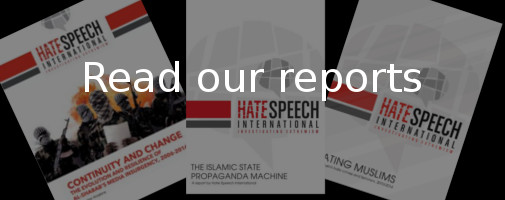
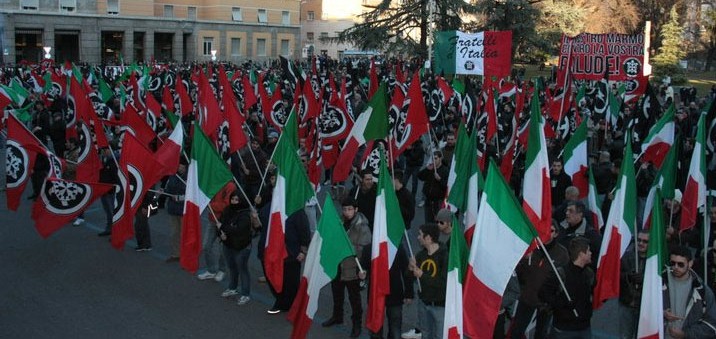
 Print Friendly
Print Friendly




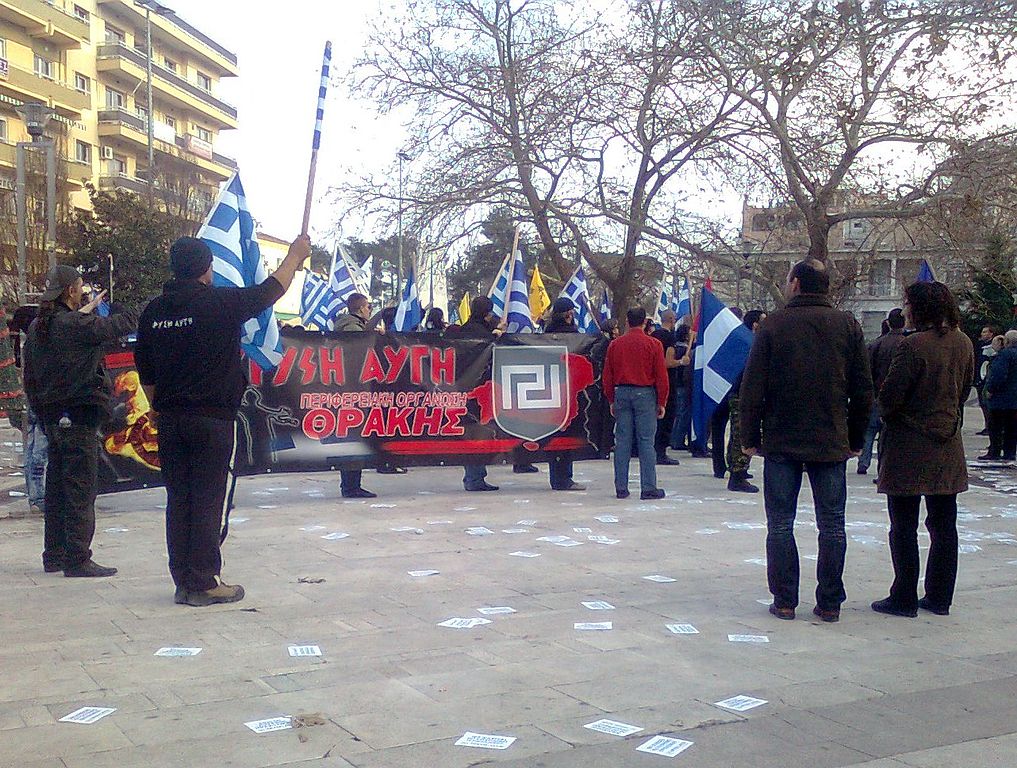
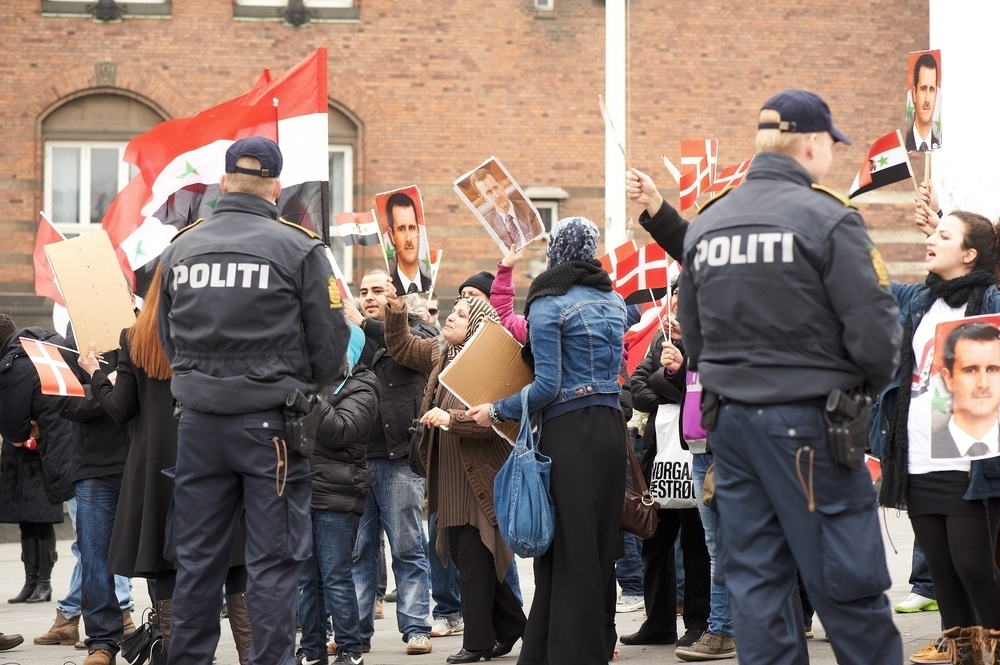

I don’t often read hit-pieces by “the enemy” – being a “right wing extremist” myself – but the author deserves some praise for this even-handed and well-written biography of CPI.